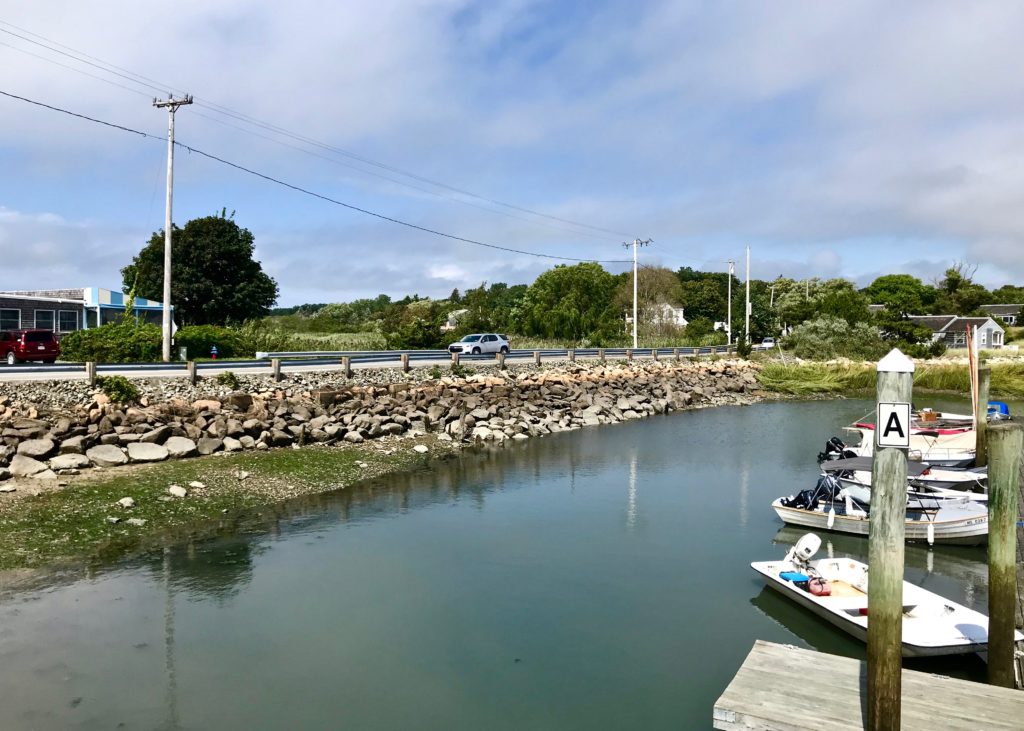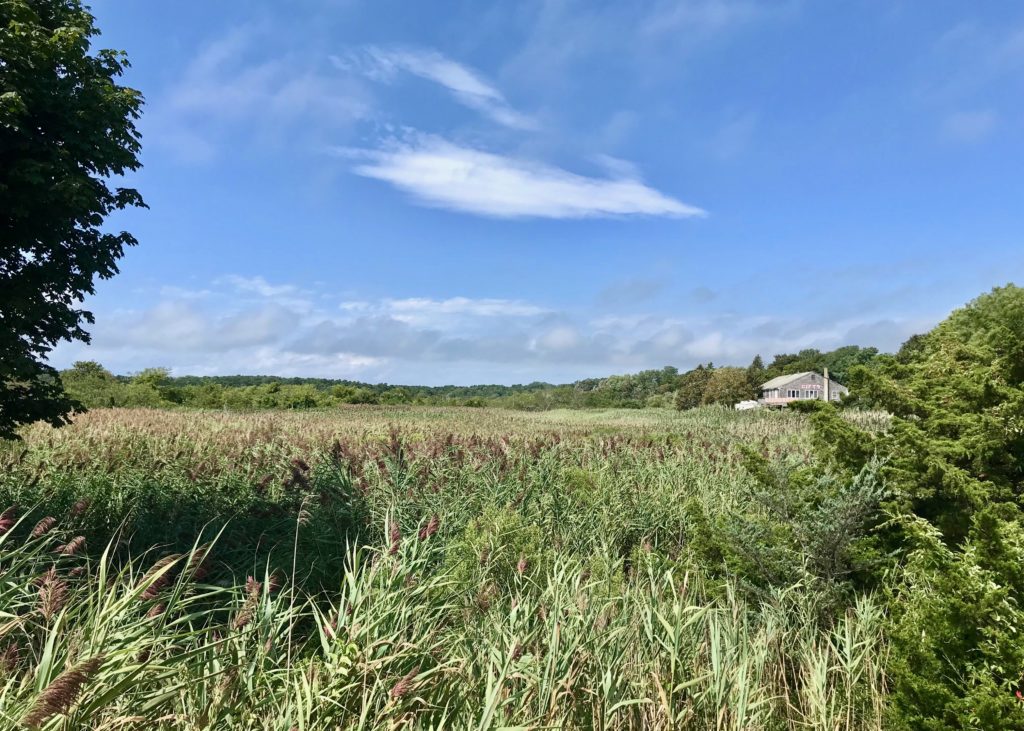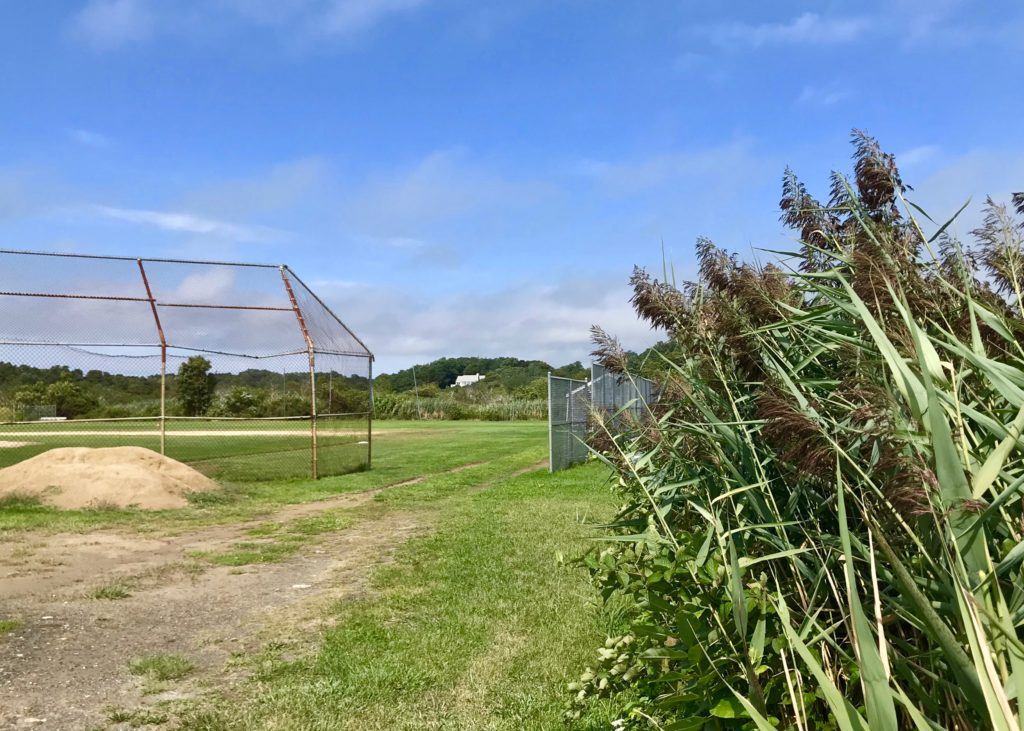
WELLFLEET — A multimillion-dollar plan to restore Mayo Creek could significantly improve water quality in Wellfleet Harbor and would not threaten nearby structures or septic systems, town officials have concluded. The select board voted unanimously earlier this summer to proceed with planning the restoration following preliminary research into the project’s feasibility.
But nearby property owners remain worried that restoring the tidal flow of seawater in the estuary will cause flooding and a higher groundwater level. In response to their concerns, Mayo Creek Restoration Committee Chair John Riehl said that his group was proceeding with “an excess of caution.”
The town is under pressure from the state Dept. of Environmental Protection to reduce nitrogen levels in the Wellfleet Harbor watershed. The Mayo Creek committee found that restoring the estuary would remove nitrogen from water traveling from the town center to the harbor, benefitting both the harbor ecosystem and the town’s shellfish industry.
Groundwater in Wellfleet center is full of nitrates due to the high density of septic systems there. Water passes from the center into Mayo Creek and then out into the harbor.
Nitrogen loading in Wellfleet Harbor contributes to algae blooms, and the fecal coliform growing in the marsh affects the shellfish industry, as small quantities of bacteria can require the closing of aquaculture beds.
Goal: restore 20 acres of salt marsh
The Mayo Creek committee reported that 20 acres of the original 60-acre estuary could be recovered and restored to a fully functioning tidal marsh. Besides improving water quality in the harbor, restoration could mitigate the effects of sea-level rise.
With the select board’s approval in hand, the committee can now proceed to the next steps, including securing permitting and funding.
The Mayo Creek dike, which serves as a causeway connecting Commercial Street to the Wellfleet Marina, has restricted the creek’s natural tidal flow since 1909 — the year after the Herring River dike was built. The creek dike’s two-foot-diameter culvert contains a one-way valve that stops saltwater from entering the estuary.

The committee’s report recommends replacing the existing culvert with a large adjustable culvert gate — perhaps six by seven feet — which would be opened in increments to slowly increase the water flow from the harbor into the creek. The change in flow would be closely monitored to gauge the effects on ecosystems, flooding, and the water table.
The project will take time and won’t be cheap. The large culvert alone would cost $2 million to $4 million, and that doesn’t include the bill for other engineering or construction work or the monitoring program that would ensue.
Five years of study
The Mayo Creek committee has been studying the challenges and potential benefits of restoration since 2014.
Salt marshes are home to denitrifying bacteria, organisms that break down nitrate and convert it to inert nitrogen gas, which makes up 78 percent of the atmosphere. If saltwater flowed into the marsh with the tide every 12 hours, these bacteria would grow abundantly and clean the dirty water coming out of Wellfleet Center before it entered the harbor.
Restoring Mayo Creek would also help mitigate flooding due to sea-level rise.
Committeeman John Portnoy explained that healthy marshes can be important barriers between coastal properties and the sea. “Marshes accrete, or grow upward, by accumulating sediment that comes in from the ocean,” he said. “Flood tides carry tiny particles of sediment onto the marsh. Then it can grow and keep up with sea-level rise.”
Marsh vegetation can also mitigate storm surges by absorbing wave energy and preventing rough waters from reaching improved property. “A marsh between Cape Cod Bay and adjacent development is a buffer to storm surges,” Portnoy said. “Marshes are really important protection.”
Property owners are not convinced
Property owners near Mayo Creek have concerns about flooding and damage to septic systems.
At a June 25 select board meeting, Maria Hollis, a resident of the Harborside Village Cooperative, said that it uses a cluster sewage treatment plant, installed in 2004, which costs over $70,000 annually to maintain. State health codes require a separation between its leach field and the groundwater table. If the water table rises due to the restoration project, Harborside Village may be in violation of these codes.
The Woods Hole Group conducted a modeling project in 2011 at Mayo Creek and concluded that the restoration would not affect the water table. But Harborside residents weren’t convinced.
In a letter to the select board, Harborside’s lawyer criticized the Mayo Creek committee report for a lack of empirical data. Models “are no substitute for obtainable real world data,” the letter stated. “The public requires more than unsupported ‘beliefs.’ ”
The quality of life for residents may be damaged by the “extreme foul odors expected to be present for years as vegetation die-back occurs,” which will “keep tourism away from area restaurants and businesses,” attorney Shepard S. Johnson Jr. wrote. “It goes unsaid that no mitigation plans are proposed for such expected concerns.”
Riehl emphasized that the committee’s report is “conceptual” — a first step towards restoration, with no firm commitments. It may take years to research and gain approval for a more detailed plan.
“We fully accept more has to get done,” Riehl said, before anything can happen on the ground. Riehl believes that Harborside Village will have ample time to ensure their concerns are taken into account.
Harborside’s attorneys in the offices of James W. Marsh of New Bedford did not respond to multiple requests for comment.
The committee report includes suggestions on how to mitigate risk for abutting properties.
“We have, out of an excess of caution, said that we’re going to control the mean tide level in the restored creek to be sure that the restoration doesn’t influence the groundwater level and therefore put any septic systems at risk,” Riehl said. But the marsh will have to be excavated to allow the water table to drop to its natural level.
Moreover, research suggests that the water table under Harborside Village is not controlled by Mayo Creek. The committee was surprised to find that it is actually controlled by the sea.
“The water level in the fill is way above the level in Mayo Creek throughout tidal cycle,” Portnoy said, suggesting that if groundwater levels do rise it will be a result of rising water levels in the bay, not in the creek.
In other words, sea-level rise caused by climate change is likely the biggest threat to Harborside Village.

“Regardless of what we do at Mayo Creek, all those properties are in the flood zone,” said Portnoy. “They’re protected only by Mayo Beach. Long term, or not so long term, they’re going to have to do something.”
Selectman Kathleen Bacon agreed. “I think the larger concern for [Harborside Village residents] should be how they mitigate flooding across Kendrick Avenue,” she said.
Why the dike was built
The Mayo Creek dike, like the Herring River dike, was constructed to control mosquitoes and expand developable land.
“It was a common practice back then to block off salt marshes,” Portnoy said. “People didn’t realize how important they were.”
Before this intervention, the Mayo Creek tidelands totaled about 60 acres. The original 40-foot-wide inlet was filled. After the dike was built, residents filled in 15 acres of the tidelands, creating Baker’s Field and parts of Harborside Village.

Since 1909, the salt marsh has been transformed into “highly degraded freshwater wetland,” Portnoy said. Productive salt marsh vegetation, home to denitrifying bacteria, has largely died out and freshwater wetland vegetation has taken over. The water is low in dissolved oxygen and high in nitrogen due to minimal water flow through the estuary, degrading ecosystems in the marsh.
Compared with the much larger Herring River restoration project, restoring Mayo Creek may actually be more difficult.
Portnoy said that the Herring River project is less complicated because most of the estuary lies within the National Seashore. “The restoration of Mayo Creek is severely constrained by development that has encroached into the floodplain,” Portnoy said. For the Herring River, “It’s a bigger system, but a much smaller proportion of it includes sensitive structures. Given its size and lack of development, the potential for restoration is much greater.”
For protecting Wellfleet Harbor’s water, however, “Mayo Creek is more strategic,” he said.
Next steps include a more detailed engineering assessment and securing funding. “We have an alternative that seems workable, but it needs money and permitting, which is complicated,” Portnoy said.
Riehl agreed, adding that persuading property owners and securing permits will take time. “There’s still a lot of important work to be done,” he said.
Bacon said she considers Harborside Village affordable housing and that she understands the residents’ concern. The restoration raises questions about how to deal with sea level rise while preserving the whole community.
After hearing the committee’s report, she was optimistic about the restoration not causing damage. “I’m confident that the restoration will be done and mitigate it in a way so as to not cause any damage to septic or land use for that trailer park,” Bacon said.
“I’m in this for the next generation,” she added. “We have to leave this in better shape. That’s the only wish I have right now.”
Editor’s note: In an earlier version of this article, the salt marsh organisms that convert nitrates to nitrogen gas were incorrectly termed “nitrifying” bacteria instead of denitrifying bacteria.



